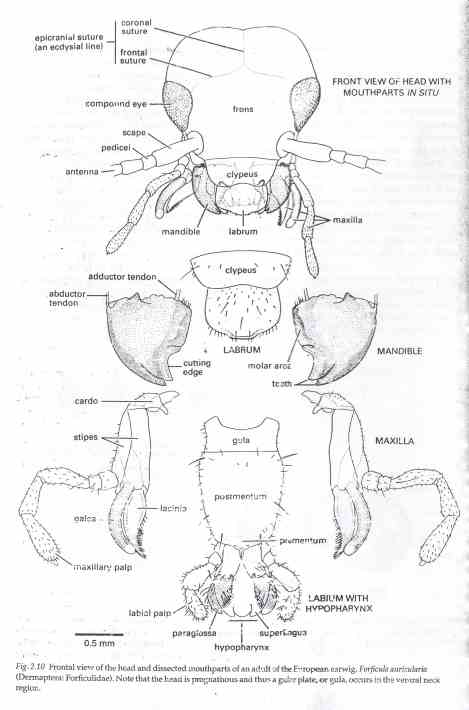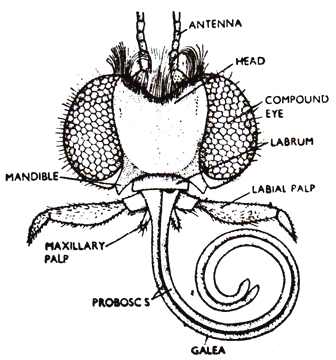 Alfred Ajibola
- Thu, 05th March, 2020 @ 11:45 AM
Alfred Ajibola
- Thu, 05th March, 2020 @ 11:45 AM
Topics in Agricultural Science
Problems of agricultural marketing Channels of agricural marketing Agricultural marketing: Stages of agricultural marketing Forest management practices in agriculture Forest management and importance of forest Agricultural ecology and farm ecosystem Components of farm ecosystem Soil formation in agricuture Economic empowerment through agricuture Management as a factor of production in agriculture Labor as a factor of production in agriculture Finance as a factor of production in agriculture Water as a factor of production in agriculture Land as a factor of production in agriculture Len Academy Agricultural Science midterm questions for JSS1, 2nd term Len Academy Agricultural Science midterm questions for jss2, 2nd term Clay soil explained with its types and characteristics Loamy soil explained with its characteristics Sandy soil: Characteristics of sandy soil and ways to make it fertile Soil explained with its compositionAcademic Questions in Agricultural Science
The ideal pH for the optimum growth of most agricultural crop is between _____.
A. 1 – 3.5
B. 4 – 5.5
C. 6 – 7.5
D. 8 – 9.5
E. 10 – 11.5
F. 12 – 13.5
People who go about their lives by raising and herding livestock such as cattle, sheep and goats are said to practice _____.
A. Pastoralism
B. Pasturalism
C. Herding
D. Herdsmen
E. Animalism
F. Anime Farming
The act of giving birth in pigs is called _____.
A. Calving
B. Piggery
C. Kidding
D. Farrowing
E. Calfing
F. Pigging
Which of the following is not a vegetable?
A. Cashew
B. Cocumber
C. Tomatoes
D. Carrot
E. Squash
F. Eggplant
All plants are crops.
A. True
B. False
In agriculture, macronutrients are essential nutrients required by plants. Which of the following is not a macronutrient?
A. Zinc
B. Sulphur
C. Calcium
D. Phosphorus
E. Potassium
F. Magnesium
Which of the following is false concerning micronutrients?
A. They are non-essential nutrients
B. They are required by plants in minute quantities
C. Iron is a micronutrient
D. Chlorine is a micronutrient
E. Copper is a micronutrient
F. Boron is a micronutrient
_____ is a term that describes the biological, chemical and cultural control tactics employed to make pest management economical, environmentally friendly and socially acceptable.
A. Integrated Pest Management
B. Integral Pest Management
C. International Pest Management
D. Inclusive Pest Management
E. Imbibed Pest Management
F. Inclusion Pest Management
An insect pest can simply be defined as any insect capable of causing damage to crop plant.
Please read on the differences between plants and crops here.
It is important to state that we have other organisms that aren't insects (insect pests) but are also capable of causing damage to crop plants. Such organisms include:
Birds
Monkeys
Rodents
Man
Nematodes
Our classification of insect pest will be based on their mode of feeding. These group of insect pests will include:
A major characteristic of the biting and chewing insect pest is the possession of mouth-parts such as a strong mandible and maxillae.
You can read on the skeletal material (chitin) found in Insects here.
The image below shows the mouth parts of a biting and chewing insect:

Please read on pest of agricultural importance here.
The mandibles and maxilla of insect pests are used for biting and chewing plant parts.
Examples of biting and chewing insects include grasshoppers, termites, army worms, locust, beetles, leaf worms and so on.
Piercing and sucking insects possess a strong mouth part termed proboscis.
The proboscis is a tiny and elongated mouth-part which enables certain insects to pierce through plants in order to suck the liquid substances from their tissues.
You can read on agricultural terms and meanings here.
The image below shows the proboscis of a piercing and sucking insect:

Examples of piercing and sucking insects include aphids, cotton strainers, butterflies, mealy-bugs and white flies.
Boring insects will bore or make holes into crop plants. They end up destroying the tissues of plants, fruits and seeds through this process.
Please read more on the problems of agriculture in Nigeria here.
Examples of boring insects are stem borers, bean beetles and weevils.
Below are the economic importance or effects of insect pest in crop production:
Kindly share this article via the links below:

Please click here to contact Alfred if you require any of the following services:
If you need a standard website at an affordable price.
Online training on the academic subjects: biology, chemistry and basic science.
If you require an advanced smart school management system (web application) for your school.
Click here to read on Len Academy Smart School Software.
Please click here to follow Len Academy on Google News.
Amazing facts in Agricultural Science
Cows technically have one stomach, not four. However, a cow's stomach has four compartments. These are: rumen, reticulum, omasum and abomasum
Peanuts are legumes and not nuts
Although plants neither see nor hear, they can recognize their siblings and even give them preferential treatments
Squirrels do plant more trees (through their actions) than an average human in their lifetime. They often hide their acorns and nuts underground and forget about them
Cows have got the ability to walk up stairs, but not down stairs
A group of cows is called a team, drove or herd.
People just prefer to call them herd
Notable points in Agricultural Science
Below are characteristics of gymnosperms:
Their seeds have cones that protect them.
Sepals and petals aren't present in their cones.
Stigma and style are absent.
They do not produce fruits. Only seeds are formed.
Companion cells are absent.
Sporophyll form the cones.
Anther and filament are absent.
The ovules are not present in the ovary.
Gymnosperms do not possess flowers.
Please read on the anatomical differences between gymnosperms and angiosperms here
The flower is the reproductive organ in plants' sexual reproduction. In order to achieve a successful sexual propagation or reproduction in plants, the floral parts of the flower are utilized.
The floral parts of a flower consists of the followings:
Sepals
Petals
Stamen
Carpel
The stamen is male portion of a plant. It consists of the anther and filament.
The carpel (or pistil) is the female portion of the plant. It consists of the stigma, style and ovary.
An organism will be considered a pest if it does one of the followings:
Attack crops and eat its seeds, roots, stem, leaves and flowers. Examples are locust and grasshoppers.
Cause damage to stored food, fruits or other agricultural produce. Some may even urinate or deaficate on these products. Examples are rodents, cockroaches and mice.
Attack and kill farm animals like goats, sheep and cattle. Examples are foxes, wild cats and snakes.
Act as disease vectors. A vector is an organism that carries parasite and other disease causing organisms, without being affected; but when they introduce the parasites into their host, such host becomes infected with disease. Examples of vectors are rodents and mosquitoes.
Below are the classification of crops based on their uses:
Oil crops
Vegetable crops
Latex crops
Drug and Medicinal crops
Beverage crops
Fibre crops
Fruit crops
Root and Tubers
Legumes
Spices
Cereals
All crops are plants but not all plants are crops. Below are some instances:
Weeds are considered as plants, not crops.
Parasitic plants are not necessarily crops. Examples of parasitic plants include mistletoe, corpse flower and striga.
Carnivorous or insectivorous plants are not necessarily crops. Examples are sundew, venus flytrap and pitcher plant. The image below shows a carnivorous plant (venus flytrap).

Meanwhile, always understand that all crops are plants, and they are grown for food, money or something beneficial.